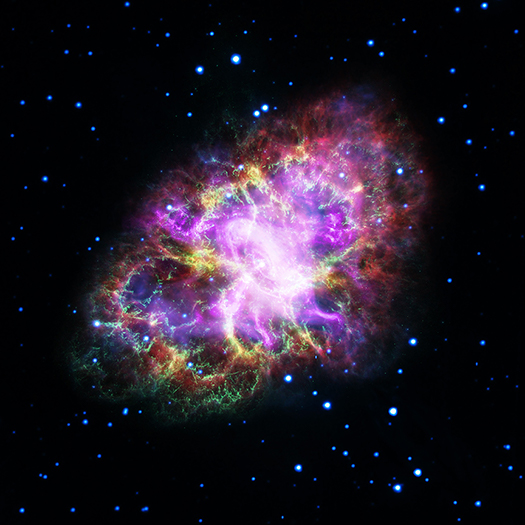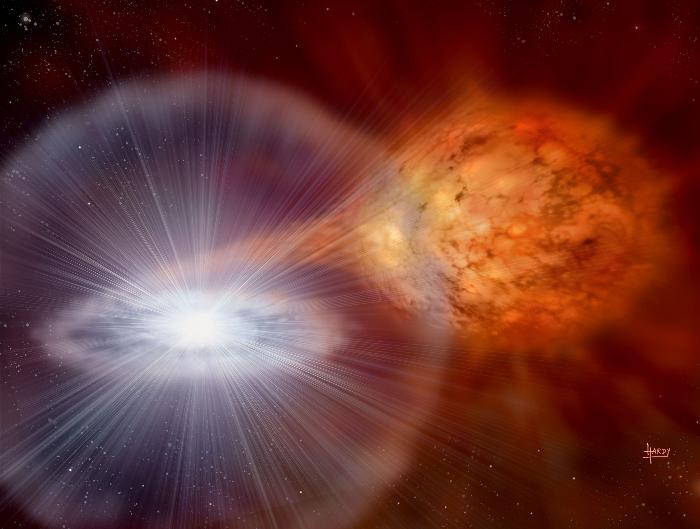Compact Objects and Transient Phenomena
We investigate the physical conditions in supernova explosions and their compact outcomes, neutron stars and black holes, as well as transient phenomena in the vicinity of supermassive black holes at the centre of galaxies, so as to better understand the most extreme objects in the Universe.

Research group
Jerome Chenevez Associate Professor jerome@space.dtu.dk
Giorgos Leloudas Senior Researcher giorgos@dtu.dk
Søren Kristian Brandt Associate Professor Emeritus skbr@dtu.dk
Gaurava Kumar Jaisawal Senior Researcher gaurava@dtu.dk
Sigrid Helene Nissen PhD Student sighni@dtu.dk
Niels Lund Associate Professor Emeritus nilu@dtu.dk
Hannah Wichern PhD Student hawic@space.dtu.dk
Simon Nicholas de Wet Postdoc sndwe@dtu.dk

Compact Objects

Tidal Disruption Events

Occasionally, a star can be disrupted by the gravitational field of a supermassive black hole, resulting in a luminous flare, called a tidal disruption event (TDE). Several candidate TDEs have been discovered by transient surveys during the last few years and they offer a unique tool to probe monstrous black holes that would otherwise remain invisible. Our team plays a leading role in studying these extreme phenomena: we use various investigation tools, including spectroscopy, polarimetry (often through the ePESSTO collaboration and the ESO facilities) and comparison with models in order to uncover the origin of radiation in TDEs.

The current generation of gravitational wave detectors are sensitive to the mergers of compact objects such as neutron stars and black holes. Our team is part of a larger effort to search for and study the transient electromagnetic radiation emitted by these sources. This effort has so far yielded the detection of the gamma-ray burst coincident with GW 170817 and the exciting discovery of the famous kilonova associated with it. To this end, we use both the INTEGRAL satellite in the gamma-rays, and participate in the ENGRAVE collaboration, where we lead the polarimetry Working Group, and the BlackGEM telescope array. We are also involved in the future LISA mission, which will be a gravitational wave detector in space, providing a scale consistent with supermassive black holes (https://lisa.nasa.gov).